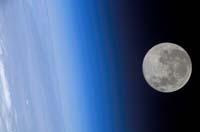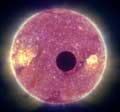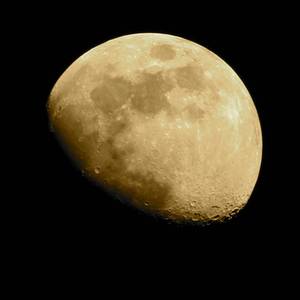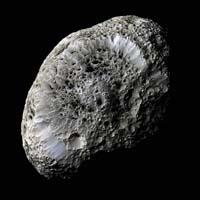Moon formation in stereo
2009/05/16 Galarraga Aiestaran, Ana - Elhuyar Zientzia
According to a theory that explains the origin of the Moon, 4.5 billion years ago, the planet Theia opposed the protolor. The collision was terrible and, as a consequence of it, there remained a lot of waste in space, around that Earth. Over time, the waste was gathered and compacted, thus forming the Earth satellite, the Moon.

In this photo taken from the International Space Station you can see the Earth's atmosphere and the Moon
Photo: Recent searches
This theory, known as the theory of Tehia or Talka, is the most accepted of those that today explain the genesis of the Moon. And it explains, among other things, why the Moon has such compositions and densities, why the Earth and the Moon are of similar age or why the Moon is so great about the Earth. However, astronomers have not found clear evidence that Theia existed. Precisely, the Stereo probes have gone in their search to these unique places of space.
Places where the gravitational forces of Earth and Sun are neutralized are called Lagrange points, as demonstrated by mathematician Joseph Lagrange, XVIII. That in the twentieth century there are places of this type in the orbit of the Earth around the Sun. There are five, from L1 to L5, in which it tends to concentrate materials in spatial disuse.
Theia would also be created at one of those points, joining the material collected there. Astronomers who founded the theory of Theia believe that L4 or L5 can be the origin of the theory. According to them, Theia increased at that point until she had the measure of the Moon; then, by the gravity of other emerging planets, she left there and entered the orbit of the Earth.
If theory is taken for good, Theia disappeared long ago, but the materials that did not join Theia would continue in L4 or L5. These materials, called theiasteroids, have been searched by astronomers using telescopes. Look yes, but don't find it for now. For their part, the Stereo probes will closely explore the L4 and L5 points, allowing their detection. As long as there are theiasteroids, of course.
Not the only theory
However, this is not the main task of the Stereo probes. In fact, Stereo is a solar observatory. The probes will be placed on either side of the Sun for a three-dimensional view of solar activity. But as to go there they have to go through L4 and L5, by the way they will look for Theia tracks. The probes have already begun to send data and, in addition to some known asteroids, have found nothing. However, the months of September and October will be the closest to these places, so they still hope to find some discovery.
And in addition to Theia's theory, there are other theories that explain the birth of the Moon. According to one of them, during the formation of the solar system, the protocon revolved very quickly, from which much was distributed: The moon. However, this theory presents clear gaps.
Another theory says that the Moon was born elsewhere in space and that as it passed near the Earth it was trapped by the gravity of the planet. But the probability of this happening is very small.
It could also happen that both were created in the same area of space, but did not come together and that one became the satellite of the other. However, in this case the compositions of both should be similar. And it is not so.
There is therefore no lack of a theory that explains the origin of the Moon. But tests are needed to confirm...
Published in Gara

Gai honi buruzko eduki gehiago
Elhuyarrek garatutako teknologia






